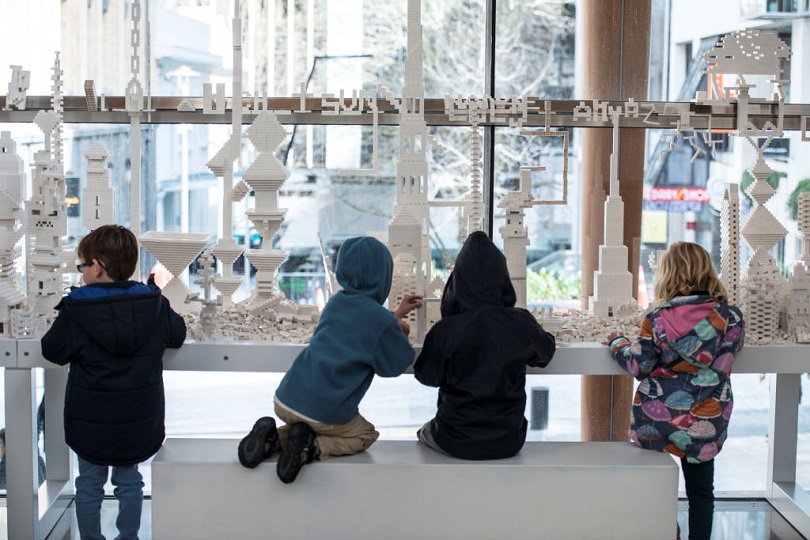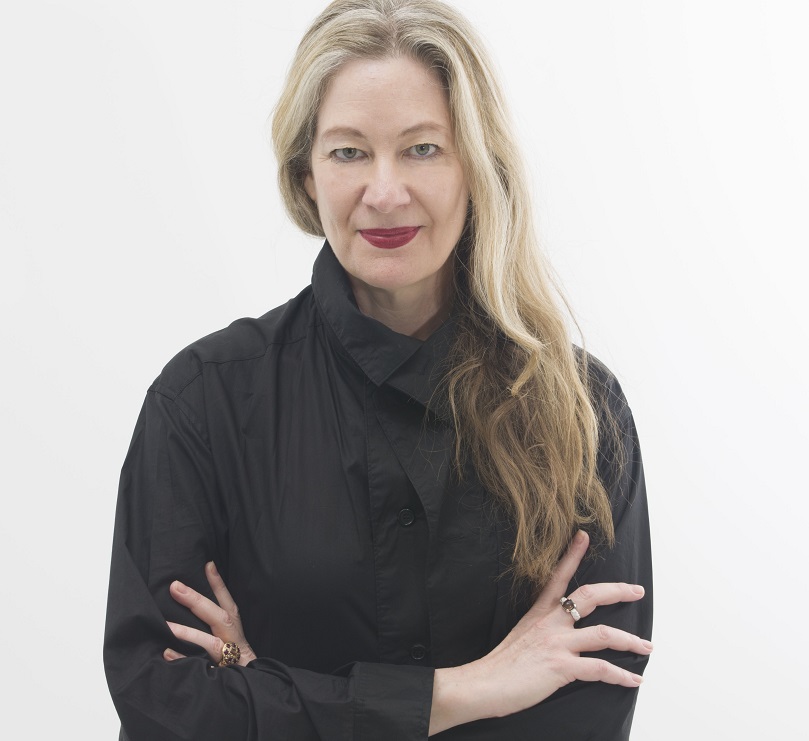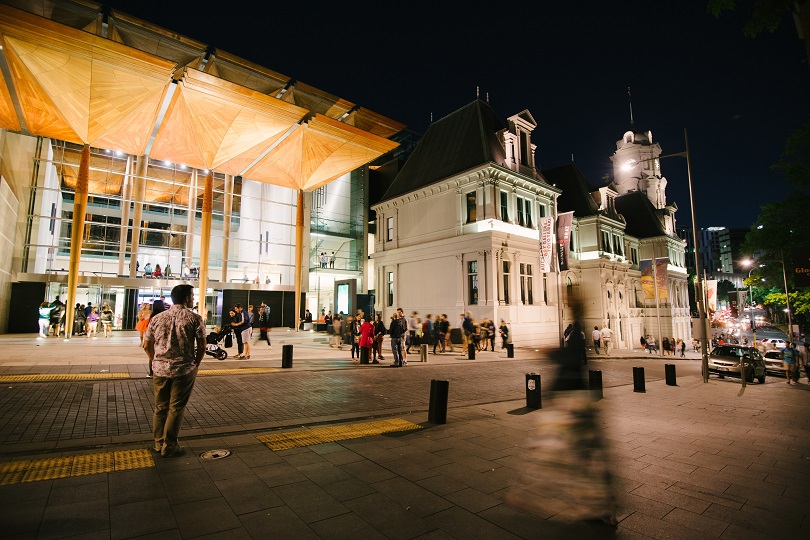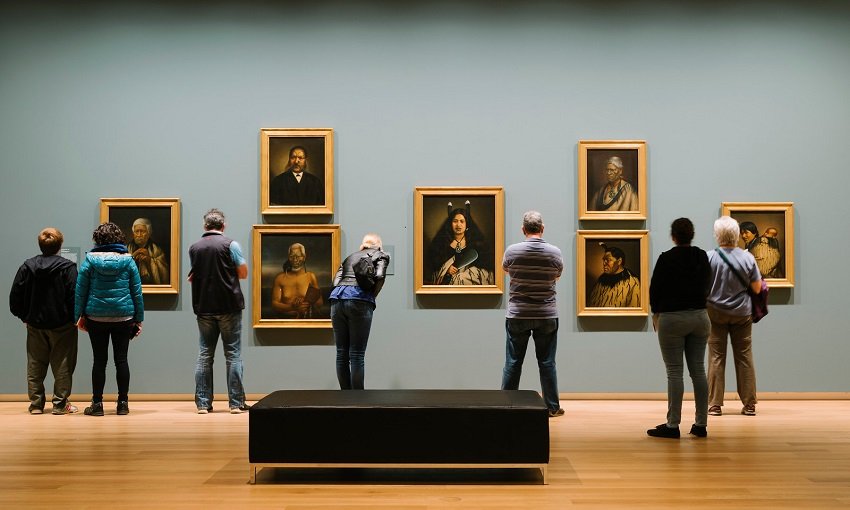Simon Wilson: Why is Auckland slowly strangling its art gallery?
This piece by Simon Wilson was published on The Spinoff on 12 December 2017, and was made possible by Heart of the City. This month, Auckland Council discusses the priorities for spending from 2018 – 2018 ahead of public consultation early in 2018 and the new long term budget being adopted in June.
The formalities at the opening of the Lindauer exhibition were, as you might expect, highly ritualised and extremely moving. A gallery connected to the culture of its place. I think my favourite thing was that, in each of the rooms, you came across kuia, just standing there, or sitting, being with the paintings that meant so much to them. Their own people. They’d come from the East Coast and up north and down south, and it wasn’t that they seemed especially happy. On the contrary, most of them looked tired. But they were so intensely engaged.
A hundred years ago the emigre Czech artist Gottfried Lindauer can barely have known who or what he was looking at, much of the time, and yet there on the canvas was the indisputable evidence that he did understand. And there in the room was the evidence the gallery had hot-wired its guests deep into something essential. It was such a privilege to witness.

But that wasn’t my absolute favourite moment in recent times in the Auckland Art Gallery Toi o Tāmaki. Nor was the experience of coming face to buttocks with Rodin’s The Kiss, in my own city, although that was amazing too. Nor of spying those wonderful brightly coloured blobby things, which the artist Judy Darragh calls Limbo, hanging in the main atrium, which you can see day and night from every vantage point in the street and the park behind, because of the architectural excellence of the building itself. Rocks floating in space, a siren call of the imagination.
Nor, even, of sitting in the darkened room to let Lisa Reihana’s in Pursuit of Venus [infected] wash over me for 40 minutes. Who needs yoga when you’ve got art that immersive?
But the best thing? My pick: The cubic structural evolution project by the Danish artist Olafur Eliasson. A city of castles and spires all made from white Lego blocks, set up on a wide shelf all along the main windows of the atrium looking out to the street. Kids clustered to play with it and so did every adult with them and every other adult who thought they could get away with it. One thing you can say is, trust an artist to give something made from a toy a name like that. But isn’t that part of the fun? Because another thing you can say is, it was art and it was just brilliant.

The Auckland Art Gallery is owned and run by Auckland Council, through the council-controlled organisation Regional Facilities Auckland. In the most recent financial year (to end of June) 550,000 people visited. That’s 17% more than the 470,000 target.
In that same year the gallery made do on an operating (opex) budget of $6.9 million. That’s down 25% from the $9.2 million they received in 2012, the first full year after the new building opened. A quarter of their opex funding gone, despite having major new exhibition spaces, 80% more space for the public and newly expanded responsibilities – not just to few hundred thousand citizens of the old Auckland City, but to the 1.5 million in the new supercity.
Now the gallery is calling crisis. It says it cannot operate as required. Senior staff have left. Exhibitions you might expect to come here do not (they passed on a big one from London’s Victoria and Albert Museum just this week). Parts of the building are no longer used; where it was always hoped there would be a lively interplay of art and park, it looks derelict. There’s been talk of closing a couple of days a week.
The mayor, Phil Goff, says there is no crisis. He told the council’s finance committee last month that funding is up by a million dollars a year. He points to increased support from sponsors and private benefactors and believes the gallery should charge overseas visitors. His draft 10-year budget, which is being debated by council this week, does not allow for any increases in AAG funding. The budget could, in fact, continue to be cut.
Some councillors have spoken out about this. To date, though, none of them has shouldered the task of overturning the mayor’s spending cuts. And remember, he’s got just one vote. They can overrule him if they want to.
Gallery director Rhana Devenport told me that “ideally” they need another $5 million a year. But they’re not even asking for that. RFA’s bid for 10-year budget funding, to cover all the sporting, cultural and other facilities it supervises, was for a mere $4.7 million extra per year. Paul Brewer of RFA says he expects “just over half of that” would go to the gallery.
Devenport says she has “no idea” why the mayor thinks they have a million dollars more in funding.
The Auckland Art Gallery has the largest collection of New Zealand art on display anywhere in the world (although that will change in February when Te Papa opens its new exhibition spaces). Along with the Auckland Museum it’s one of only two premiere cultural attraction for visitors to the city. It has one of the leading art conservation teams in the country. The building has been garlanded in national and international awards. And its viability is under threat for the sake of just a few million dollars a year.
Devenport is keen to say they do not begrudge the museum the money it gets, but they sure look with envy at the funding mechanism. Auckland Museum has its own act of parliament, which sets its income as a percentage of rates; when the supercity was formed, the rating base grew. That doesn’t happen with the gallery. Auckland Museum receives $30 million of public money.

Is the mayor right? Could – and should – Auckland Art Gallery do more to look after itself? That, after all, is a principle he and the council apply to as much council activity as they can.
He’s got two points. First, that the gallery has good funding sources. Second, that an income source is going begging because overseas tourists are not being charged.
On the first, it’s true the gallery’s benefactors have stepped up their support. The gallery gets more money from more sources than it used to. But that money is for acquisitions, special projects and the like. It doesn’t go to running expenses and it doesn’t pay wages. It doesn’t keep the doors open.
So what about those overseas tourists, who make up a surprisingly high 60% of all gallery visitors? Auckland Museum charges them, so does Motat, so do many other museums in this part of the world. Why should Auckland ratepayers stand all the running costs of an institution that’s so popular with visitors?
But that’s museums. Public art galleries typically don’t charge. They’ve tried it already in other parts of the country – Napier and Dunedin, for example – but stopped the practice because guess what happened? Visitors stopped coming.
The Auckland gallery has its own experience to learn from in this. The most popular show last financial year, with 99,000 visitors, was the Lindauer. It was free. But arguably the biggest show, in art terms, was The Body Laid Bare, an exhibition of nudes from Britain’s Tate Galleries that included works by many of the most famous artists of the 19th and 20th centuries. We haven’t had a visiting show of such size and status for a very long time. Also, you know, there was a lot of nudity.
The gallery charged for that show – over $20 for an adult – and 48,000 people came through the door. They didn’t mind doing it and will continue with that model for the big touring shows. But note the numbers: less than half those who turned up to the Lindauer.

Another indicator: the gallery hosts daily guided tours. Since they introduced a charge for those tours patronage has dropped by 80%. Curiously, the dropoff is not even. Chinese visitors, unlike all others, continue to do the tours and are happy to pay. But the gallery can’t very well charge a fee just for Chinese tourists.
Charging overseas visitors also puts a burden on locals, because you have to prove you qualify for free entry – by showing them a rates or utility bill, say. It’s a cumbersome inconvenience.
Despite all that it seems almost certain a general entry fee for overseas visitors will be introduced. The likely impact will be to reduce attendance.
Should the city care about that? Fewer overseas visitors to the gallery – so what? Especially if it brings in some money.
But what if it hurts the city? The gallery is popular with overseas visitors because of the size, breadth and quality of its collection of New Zealand art. If you’re in the country and interested in the culture here, Auckland Art Gallery is a very fine place to find out about it. The beautiful building also has a big part to play. We don’t have many architectural masterpieces among the public buildings in this country – the Len Lye gallery in New Plymouth is arguably the only other one, among the galleries and museums at least. Tourists want to experience that, too.
Both those things allow the gallery to play a vital role in the city’s tourism strategy. Auckland has far more visitor numbers than any other part of the country, but that’s because we are the largest entry point. In most of the world’s tourism cities, visitors who spend a day there do it in the middle of town: they go to the museums and galleries and public monuments, they go shopping, they eat out and maybe see a show. In Auckland, they go to Waiheke.
No worries about visiting the island – why wouldn’t you? – but the city wants tourists to spend more time in the middle of town too. Sky Tower is important for that, so is the waterfront, and so is the Auckland Art Gallery.
The risk of introducing a charge for overseas visitors, which is likely to reduce visitor numbers, is that it will reduce economic activity in the central city. What’s bad for the gallery is bad for the shops and bars and restaurants too.
This isn’t just about art, which the mayor may or may not care about. It’s also about commerce. And the mayor definitely cares about that.
What’s good for the gallery is good for the city. That’s also true for a city that wants to be the place where talent wants to live.
Remember that phrase? It’s Phil Goff’s favourite thing to say when he talks about Auckland. And what does it mean? Talent wants to live where the transport networks don’t support the triumphalism of cars, where you can get into the glorious outdoors with ease, where the schools are good, where the community is engaged despite the things that might divide it, where you can eat well and where, critically in all this, you can fill your hearts and minds with the bravery and experimentation and talents of the people who make, in all its forms, art.
We get some of that right, really right. We should be proud. But we don’t get all of it right and we really shouldn’t be complacent about the parts we might be getting wrong. The Auckland Art Gallery, the Auckland Philharmonia, the Auckland Theatre Company and the Auckland Festival are the bedrocks of both quality and popularity on which the cultural sector in this city thrives. It’s not that they do all the best work or have all the best shows – you’ll find some of the best stuff in their reportoires, while a whole lot more is spread around widely. But they are the professional base, the development base, the education and outreach base: their health provides for the health of so much more. When they are neglected, the harms spreads through so much else too.

So is it about elites? Are the old institutions important simply because they’ve always been important? Is this just about making sure art can comfort the comfortable?
Well, over half the Aucklanders who turn up to the Auckland Art Gallery are Māori or Pasifika.
A staggering 70% of all visitors are under the age of 35.
If the really major shows are also the most popular, other shows like the multi-screen filmscapes of the Chinese artist Yang Fudong and The Story of Rama, a telling of the Indian epic Ramayana in miniatures from the National Museum in New Delhi, also do very well.
Rhana Devenport is serious about all this. She’s been making a few appointments recently, creating a new public engagement team whose staff include people of Chinese, Tongan, Samoan and Māori heritage, and a digital tech expert from the Metropolitan Museum of Art in New York.
“The gallery is not going to know itself,” she told me. In fact, I suspect it will know itself, and we will know it better too. Devenport is making the Auckland Art Gallery into an exemplar of the city itself.
Right now, in addition to works from the permanent collection, visitors can see paintings by the great mid-century New Zealand artists Rita Angus and Leo Bensemann, cutting edge new work by Michael Stevenson before it heads to the Sydney Biennale, New Zealand feminist poster art and Renaissance masterpieces from a private collection in Florence.
And, opened just this weekend, the gallery’s summer show for families: Japanese artist Yayoi Kusama’s interactive The obliteration room. You go in a big white room and put coloured dots on things.
Photos from previous stagings in other parts of the world suggest many people just didn’t realise they could have so much fun. Art, eh. Something for everyone. A celebration of everyone.
Come on, Phil. And you 19 other councillors. Don’t kill this.






